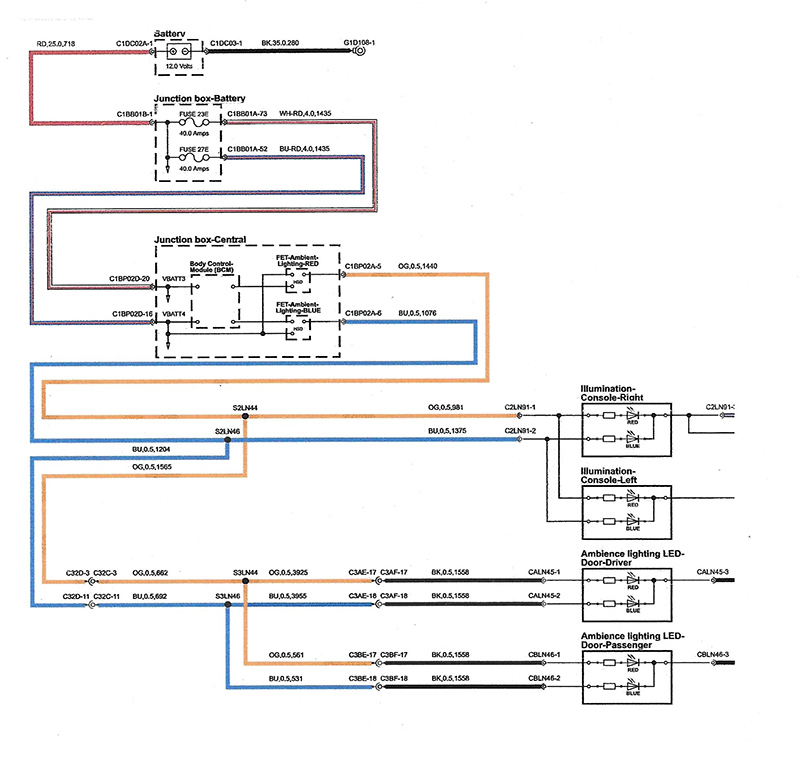
PMM troubleshooter Andy Horwat tackles a Range Rover Evoque whose battery issues are causing its owner considerable stress.
Vehicle Information
Make: Land Rover
Model: Range Rover Evoque
Engine: 2.2l Diesel
Recently I was given a call by a very emotional young lady regarding her Range Rover Evoque 2200 Diesel. I could hear her frustration as she outlined the issues she had been experiencing for over 12 months. Overnight her battery would run flat and in the morning the car would not start – this reached the point where recovery services even refused to come out. The recovery tech reported a parasitic drain as the cause. However, what was causing the drain he couldn’t say and advised her to find a garage.
At this point, she contacted her local garage used for annual servicing. They kept the car in for a couple of days but were unable to locate the source of the problem. After paying the first of many bills she continued her search for a workshop that could help. Many turned her away, presumably unwilling to unravel the mystery she’d brought them. Can you blame them? Eventually, after running out of options, she decided to pay a visit to the main dealer. Thatshould be the end of the story, right?
Unfortunately, the poor woman’s frustration only grew from this point. The car was booked in at the local dealer, however after two days they were unable to find anything wrong with the vehicle – once again, more money spent with no cause found and no fix to the issue. The day after the car returned it failed to start yet again and she decided to call the dealer, who again agreed to take the car in. They decided that it made sense to change the battery, which was agreed, and she asked if this would finally solve the problem. To this they said they would not be able to guarantee anything. The dealer even claimed that she had not been driving the car ‘properly’ or for long enough periods of time. After spending a grand at the main dealer and still experiencing issues, she luckily stumbled across my details and gave me a call. I was filled in on the situation and asked if I would take the job – how could I say no?
Initially I paid her a visit, where I checked the battery voltage (reading around 6 V), disconnected it and put it on charge for 24 hours. The next day the vehicle was delivered to my workshop for the diagnostics to begin!
Starting with the alternator
Once the battery was fully charged, I wanted to check that the alternator was supplying adequate charge, so I fully loaded the system. I switched on the full headlights, air con etc. and monitored this over a period to make sure there were no dropouts. The alternator was able to maintain a constant 14.2 volts and 14.7 off-load. That was the first test, even so it was able to carry out max load. This test was sound, no humming noise, at the same time checking the wiring diagram through my information network, ALLDATA. The BAT cable going to the starter solenoid and then to the alternator, it was time to carry out the test, disconnecting the main cable and connecting the multimeter in series, on AMP setting. The test showed 0 AMP draw. There are two main cables, the second to the fuse box. Care must be taken to avoid disconnecting this cable as this will cause all the modules to go to sleep. It can take as long as an hour for some of the modules to close.

My meter is connected, battery is disconnected, and I have a parasitic draw of 1.7 AMP, which is a huge draw and potential trouble. The following test could be a minefield as I am not sure how many modules are planted in this car, meaning the possibilities could lead to pulling fuses, however there was another test I could carry out. There is the possibility it could be an internal light. I started checking the lights in the boot compartment, all was well there. I checked the front footwell light, then I closed the car door and had a think.
Problem solved
Once the door closed and I took a moment to think I noticed that the interior ambience light was still on, even though it should have gone out by then. I waited five minutes and the light was still blinking. I opened the door and tapped the light, bingo out it goes. I immediately checked my meter reading, as soon as I closed the door the light blinked on again. Time to experiment with this new found information.
I turned the light off and checked the meter – a drop to 60 miliAMPs, still too high. I removed the unit, disconnecting the main harness and bingo! The draw was now around 6 miliAMPs and the fault was found. According to my network, the ambient lighting or illuminator console wiring diagram displayed that it is wired to the central body control module. Perhaps I was fortunate that the problem wasn’t deeper? I wondered at this point why it had stumped so many people before me. Once the problem was sorted, I connected the battery for the remainder of the day and overnight, the following morning the car started promptly, and I knew I had successfully pinpointed the issue.
The next day I informed my customer of my findings and informed her that a replacement part could be expensive, so for the time being it was decided to keep the unit disabled. She expressed her thanks for the fault being detected so quickly, especially after waiting so long for a real solution to be discovered.
This type of fault is not the first but one of many that have come my way. I always follow a procedure and, in this case, a multimeter was all that I required, together with my source of information: ALLDATA. This is a must-have source, a very good tool to possess, which was key to closing this case. Could this fault have been found earlier? With the right knowledge, tools and a little bit of common sense I say it should have.









